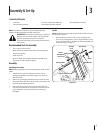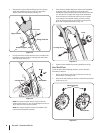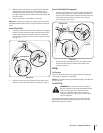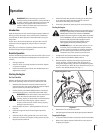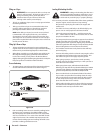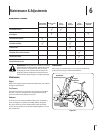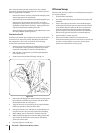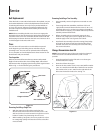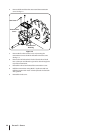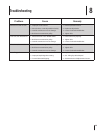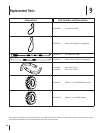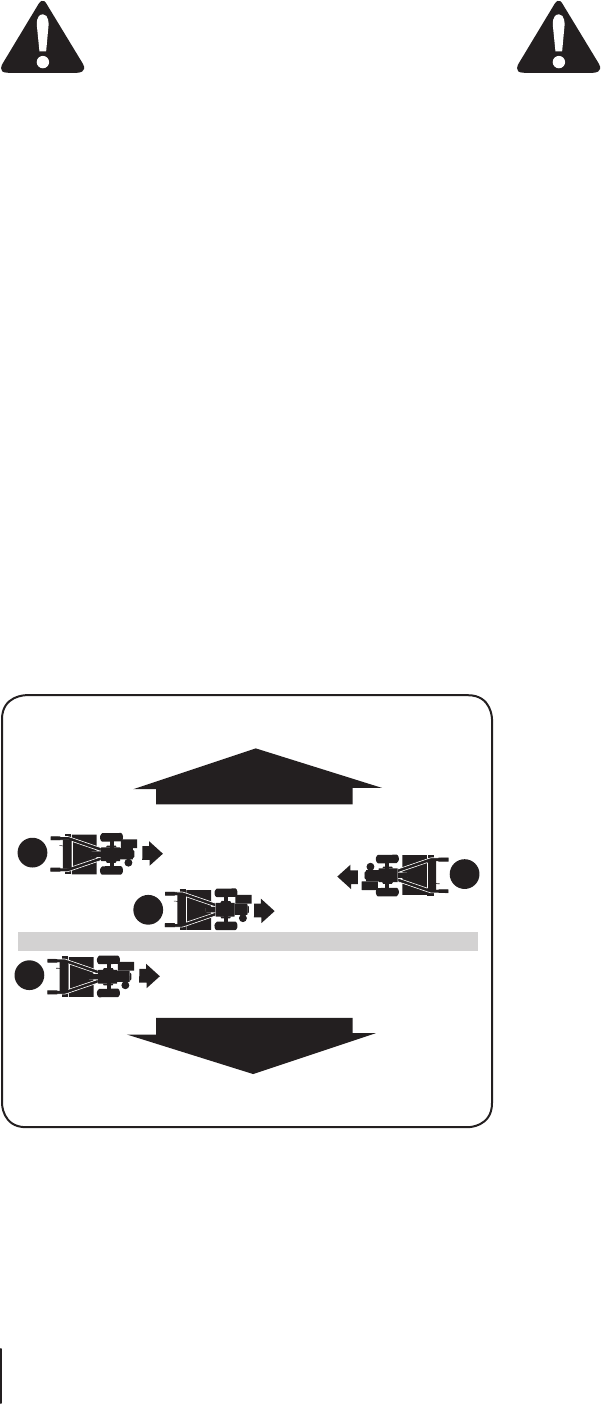
14 Section 5— operation
Loading & Unloading the tiller
WARNING! Loading and unloading the tiller into a
vehicle is potentially hazardous and doing so is not
recommended unless absolutely necessary, as this
could result in personal injury or property damage.
If it is necessary to load or unload the tiller, follow these guidelines.
Stop the engine, wait for all parts to stop moving,
disconnect the spark plug wire and let the engine and
muffler cool.
The tiller is too heavy and bulky to be lifted safely by one
person. Two or more people should share the load.
Use sturdy ramps and manually — with the engine shut
off — roll the tiller into and out of the vehicle. Two or more
people are needed to do this.
The ramps must be strong enough to support the combined
weight of the tiller and any handlers. The ramps should
provide good traction to prevent slipping, they should have
side rails to guide the tiller along the ramps and they should
have a locking device to secure them to the vehicle.
The handlers should wear sturdy footwear that will help
prevent slipping.
Position the loading vehicle so that the ramp angle is as flat
as possible (the less incline to the ramp, the better). Turn
When going up ramps, stand in the normal operating
position and push the tiller ahead of you. Have a person at
each side to turn the wheels.
When going down ramps, walk backward with the tiller
following you. Keep alert for any obstacles behind you. Position
a person at each wheel to control the speed of the tiller. Never
go down ramps tiller-first, as the tiller could tip forward.
Place wooden blocks on the downhill side of the wheels
if you need to stop the tiller from rolling down the ramp.
Also, use the blocks to temporarily keep the tiller in place
on the ramps (if necessary), and to chock the wheels in
place after the tiller is in the vehicle.
After loading the tiller, prevent it from rolling by engaging
the wheels in the wheel drive position. Chock the wheels
with blocks and securely tie the tiller down.
Tilling on a Slope
WARNING! Do not operate the tiller on a slope too
steep for safe operation. Till slowly and be sure you
have good footing. Never permit the tiller to
freewheel down slopes. Failure to follow this
warning could result in personal injury.
Till only on moderate slopes, never on steep ground where
the footing is difficult.
2. Tilling up and down slopes is recommended rather than
terracing. Tilling vertically on a slope allows maximum
planting area and also leaves room for cultivating.
NOTE: when tilling on slopes, be sure the correct oil level
is maintained in the engine (check every one-half hour
of operation). The incline of the slope will cause the oil to
slant away from its normal level and this can starve engine
parts of the required lubrication. Keep the motor oil level at
the full point at all times.
Tilling Up & Down a Slope
To keep soil erosion to a minimum, be sure to add enough
organic matter to the soil so that it has good moisture-holding
texture and try to avoid leaving footprints or wheel marks.
2. When tilling vertically, try to make the first pass uphill as the
tiller digs more deeply going uphill than it does downhill.
In soft soil or weeds, you may have to lift the handlebars
slightly while going uphill. When going downhill, overlap the
first pass by about one-half the width of the tiller.
Terrace Gardening
To create a terrace, start at the top of the slope and work down.
Go back and forth across the first row as shown in Fig. 5-8.
1
2
3
12" UNTILLED
1
REPEAT
DOWNHILL
UPHILL
Figure 5-8
2. Each succeeding lower terrace is started by walking below
tiller, always keep the uphill wheel in the soft, newly tilled
edge of each terrace. This untilled strip helps prevent the
terraces from breaking apart and washing downhill. It also
provides a walking path between rows.




